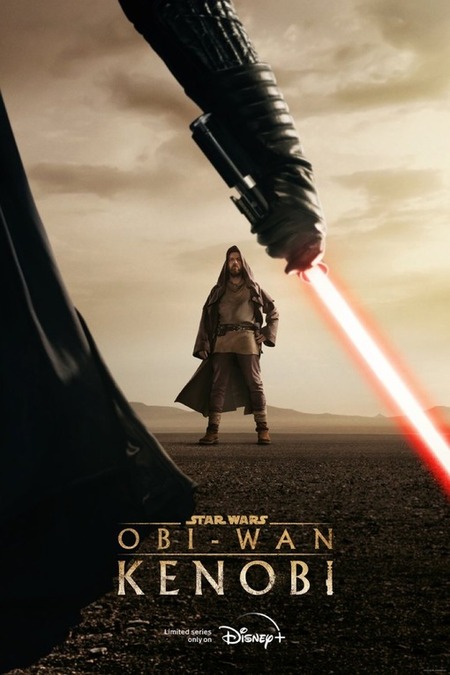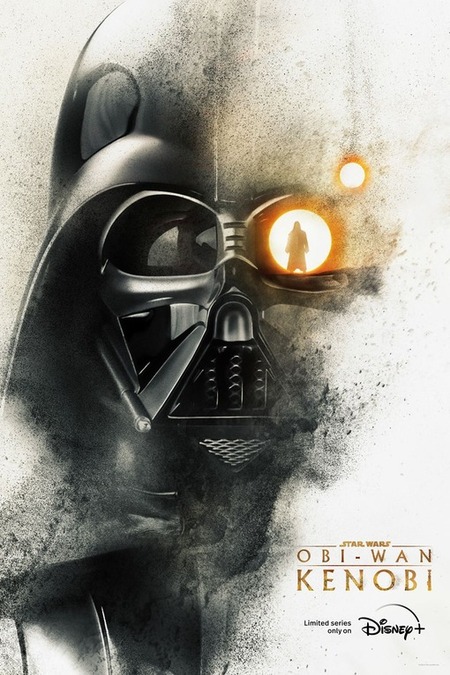One thing that was firmly established in the first two episodes of Star Wars: Obi-Wan Kenobi is that is no swashbuckling rush to an action-soaked finish line.
That’s a good thing and it makes sense when you factor in that there’s already so much we know about where Obi-Wan Kenobi heads after the events of this limited series, principally the fact that he is found on Tatooine by a grown-up Luke (Mark Hamill) at the urging of Leia (Carrie Fisher) who famously opines in a scratchy piece of R2-D2 carried hologram messaging, that he is the only one who can save her.
She has, of course, just been taken captured by Darth Vader himself, which is pretty much deal done you would think except that Obi-Wan aka Ben, with the help of Han Solo (Harrison Ford), a certain Wookie named Chewbacca, Luke, R2-D2 and the robotic Laurel to R2’s Hardy, C-3PO (Anthony Daniels), manages to get onboard an iconic impregnable Empire redoubt known as, ahem, the Death Star where Ben and Darth have their final showdown which does not go well for Ben (or it does immortally, just not so much bodily).
So, we know Obi-Wan’s fate and we know where he will finally face the full reckoning of the regretful sorrow he feels from his volcanic parting from Anakin Skywalker (Hayden Christensen) and in theory this should mean that Obi-Wan Kenobi, which features a couple of confrontations between the titular Jedi and his onetime padawan, is narratively inert, stripped bare of any real dramatic anticipation.
And yet, it is not; far from it, in fact, because while we know where the story ultimately ends, it isn’t clear where this interregnum ends, and it is clearly one rife with fury and pain given that Ben is found in A New Hope living in a cave by Luke clearly not wanting to be found.
Much of the show’s compelling storytelling arises from the fact that, presumably acknowledging we know where it all leads, the emphasis is wholly on characterisation, on what is impelling each person from Obi-Wan to a pint-sized very young Leia (Vivien Lyra Blair) to even Reva Sevander / Third Sister (Moses Ingram), an ambitious Inquisitor after Ben and, it might surprise you, Darth Vader himself, who is twisted and ugly, inside and out, and yet who is afforded some measure of nuanced character inisght.
In these final four episodes, there are some searingly intense action sequences, notably Ben and Darth facing not once but twice, the Force wielded like a weapon – you might think the adversaries would approach these battles from wholly different angles but there’s a great deal of revengeful pain and hurt on both sides; it’s how they handle it that proves to be the decisive differentiation – and a desperate flight by Path rebels from Vader’s clutches, but for the most part, Obi-Wan Kenobi stays the course, helming close its decide to explore why each character does what they do and not necessarily what.
Forget any idea that is somehow boring.
Star Wars‘ greatest strength, even from A New Hope, is that it never eschewed strong character growth in favour of action as an end in itself; in fact, if you play close attention through what became the middle trilogy of the Skywalker Saga, every single character is vastly different at the end to what they were at the start with the exception of R2-D2 and C-3PO who, at the double comic act of straight droid and not, could never be allowed to morph too much.
The franchise has always known that strong, thought characterisation is where it’s at, and so even when Darth and Ben are facing off on Jabiim, all glowering hatred on Darth’s part as he declares that Anikin is dead and he killed him – this gets Obi-Wan off the existentially guilty hook, paving the way for him to no longer being encumbered by any perceived failings as a Jedi Master – and simmering guilt on Ben’s side, the focus, by director Deborah Chow and the team, is squarely on what each person is feeling.
It’s powerful stuff because both men have been simmering for years after the events of Revenge of the Sith, and while the driving need for some kind of physical battle makes sense, we know, quite apart from the fact this is not the decisive battle that takes place between them, that the real back and forth is an emotional one, yes even for the stone cold, overrun by the Dark Side badass that is Darth Vader.
This stellar focus on character over action for action’s sake – again, it’s there, just not the main game in town – is most evident in Reva, who far from being a slavishly obedient servant of the Empire, turns out to be playing an extremely long revenge game against Darth Vader.
As this unfolds, which it does when an intuitive Obi-Wan deduces that he’s not the subject of her raging fury but Vader is, since she is – SPOILER ALERT!!! – of the few surviving Younglings from the massacre at the Jedi Temple on Coruscant when Order 66 was enacted which oversaw the hunting down and assassination of every Jedi on which the Empire could get its collective hands.
At that point, she has a choice – give in to the hatred and hellish endless fury of the Dark Side, or go down a different route of her own making, with Obi-Wan sagely and sensitively telling her “Who you become now is up to you.”
That final reckoning of staying brutally simmering in a revengeful rut or growth and rebirth, a fork in the existential road that pretty much every character faces in Obi-Wan Kenobi to a greater or lesser extent, is key for Reva who finds herself at the end on Tatooine in the final episode ready to kill one young Luke Skywalker who Darth’s son after all (shhh tell no one) and is the closest she’ll get to the object of her revenge, and who has a choice – stay on her chosen path or become someone new.
What she chooses may not be a big surprise, but it is emblematic of Obi-Wan Kenobi which understands that everyone has decisions to make and choices to employ – yes, even dark lords of the Empire such as Vader who is chastised at the end by Emperor Palpatine for his skewed, pointless focus – and that while light sabre duels and furious massing of troops is an arresting spectacle and worth watching, what really holds your attention, and it’s certainly true in these four thoughtfully-rendered episodes, is why the characters are in those battles and fighting those fights to begin with.
Obi-Wan Kenobi is a carefully wrought, nuanced and emotionally resonant limited series that knows we know where the finish line is for both Kenobi and Vader, and so wisely places its narrative emphasis on how they got to where they are, why any emotional reckoning ahead of the titanic battles we all know about matters, and why character growth and development is important, largely because it informs what comes after, imbuing the action to come with real weight and meaning and granting Star Wars a resonance that ensures it stands the test of viewing time.

